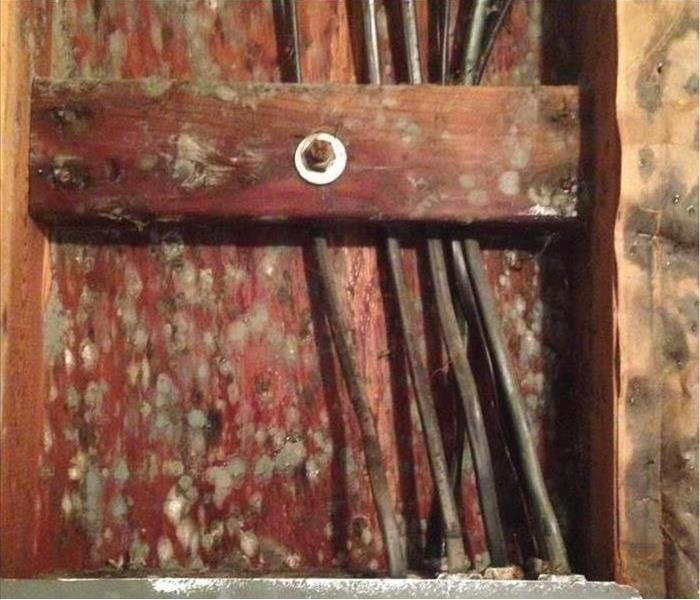The Residential Rainbow of Mold
9/12/2018 (Permalink)
Surprisingly, mold comes in an array of colors and hues. When you find green, blue or black mold at your home in Bowling Green, KY, an image of a rainbow, however, is the furthest thought from your mind. What do the colors mean? Why is it growing in your home?
Colors of Mold
There are a variety of colors, but any mold that is visible to the eye (or noticed by the nose) is in need of mold remediation. Common household colors include:
- Frequently known as black mold, the color of this sort may appear more greenish-black. Paper, dust, lint and drywall are popular breeding grounds for this type of mold.
- Green, brown and gray molds are usually found on walls, carpeting or insulation.
- White, green and blue molds regularly live on walls and food.
Causes of Mold Growth
Regardless of the color, all molds flourish in the same environment:
- Microscopic mold spores are always present in the air, but it takes certain environmental conditions for them to grow and spread.
- Areas that are constantly warm and damp are perfect for spores to attach and cultivate.
- In your home, persistent moisture from water damage, flooding or extreme humidity can cause mold to reproduce.
When a spore lands on a moist surface in Bowling Green, KY, mold grows and spreads. Outside, this helps to break down organic materials. Inside, it destroys your walls, ceilings and insulation. Irrespective of the color or surface, if mold is present in your house it must be remediated. Mold remediation specialists are trained to handle all varieties including black mold. Mold cleanup typically includes assessment, containment, air filtration and content restoration. After the air is filtered, it is normal for some spores to remain as mold is a naturally occurring element. However once the source of the continued moisture is resolved, the spores no longer have the proper environment to grow.






 24/7 Emergency Service
24/7 Emergency Service